Introduction
In the vast realm of materials, few have risen to prominence in the modern era as swiftly and universally as stainless steel. Revered for its sleek appearance and unparalleled durability, stainless steel has seamlessly integrated itself into a myriad of applications, from the shimmering facades of contemporary architecture to the intricacies of fine jewelry. Its versatility is a testament to its unique blend of aesthetics and functionality.
One application that has witnessed a surge in the use of stainless steel is the design and construction of water fountains. Gone are the days when fountains were predominantly made of stone, concrete, or ceramic. Today, the reflective sheen of stainless steel, combined with its robustness, has made it a favored choice for both public installations in urban plazas and private settings like gardens or corporate lobbies.
This blog aims to delve into the reasons behind the growing preference for stainless steel in water fountain designs. We'll explore the inherent strengths of this material, its resistance to the elements, and the long-term benefits it offers. By the end, you'll gain a deeper appreciation for why stainless steel has become synonymous with durability and longevity, especially in the world of water fountains.

The Inherent Strength of Stainless Steel
Stainless steel, often lauded for its gleaming surface and resistance to tarnish, is more than just a pretty face. Beneath its polished exterior lies a matrix of strength and resilience, making it a formidable contender in the world of materials. But what exactly gives stainless steel its renowned strength?
Composition of Stainless Steel
At its core, stainless steel is an alloy, a fusion of iron with a minimum of 10.5% chromium. It's this addition of chromium that sets stainless steel apart. When exposed to oxygen, chromium forms a thin, protective oxide layer on the steel's surface. This invisible barrier is incredibly adhesive and self-repairing. Even if the material is scratched or damaged, the chromium reacts with oxygen to repair the film, ensuring the steel remains resistant to corrosion.
Apart from chromium, stainless steel often contains other alloying elements like nickel, molybdenum, and titanium, each contributing to its specific properties. For instance, nickel enhances corrosion resistance, while molybdenum boosts the material's strength and hardness.
Comparison with Other Common Materials
When we juxtapose stainless steel with other materials traditionally used in fountain construction, its advantages become even more evident:
-
Stone and Concrete: While stone and concrete fountains have an age-old charm, they are porous materials. Over time, they can become susceptible to weathering, erosion, and algae growth. In contrast, stainless steel's non-porous nature ensures it remains impervious to such issues, requiring far less maintenance.
-
Ceramic and Porcelain: These materials, though beautiful, can be brittle. A hard knock or sudden temperature change can lead to cracks or breakage. Stainless steel, with its high tensile strength, is resistant to such physical stresses, ensuring longevity.
-
Copper and Bronze: While metals like copper and bronze have their unique aesthetic appeal, they can tarnish or develop a patina over time when exposed to the elements. Stainless steel, thanks to its chromium content, maintains its luster and appearance, resisting tarnish and corrosion.
While each material brings its unique aesthetic and functional qualities to the table, stainless steel stands out for its blend of durability, low maintenance, and timeless beauty. Its strength isn't just in its composition but in its ability to offer a harmonious balance of form and function, making it a top choice for modern water fountain construction.
Resistance to Corrosion: A Key Advantage
One of the most defining and sought-after characteristics of stainless steel is its remarkable resistance to corrosion. This trait is particularly vital for structures and installations exposed to water and the elements, like fountains. But what gives stainless steel this almost impervious nature against rust and corrosion?
How Stainless Steel Resists Rust and Corrosion
The secret to stainless steel's resistance lies in its chromium content. As mentioned earlier, when stainless steel is exposed to oxygen—whether from the air or water—it forms a thin, protective oxide layer on its surface. This layer, primarily composed of chromium oxide, acts as a shield, preventing water, oxygen, and contaminants from penetrating the steel and causing it to rust.
Furthermore, even if this protective layer is scratched or momentarily disrupted, the chromium present in the steel reacts swiftly with the surrounding oxygen to repair and reform the oxide layer. This self-healing property ensures that the steel remains protected even under constant exposure to water or abrasive conditions.
Benefits of Corrosion Resistance in Prolonging the Life of Water Fountains
The advantages of stainless steel's corrosion resistance in the context of water fountains are manifold:
-
Longevity: Fountains are continuously exposed to water, and in many cases, outdoor elements. Materials that corrode can degrade quickly under these conditions. Stainless steel fountains, with their inherent resistance to rust, can last for decades with minimal maintenance, offering excellent value for investment.
-
Aesthetic Preservation: Corrosion isn't just a functional concern; it's an aesthetic one too. Rust and tarnish can mar the appearance of a fountain, making it look aged and neglected. Stainless steel, with its ability to resist such tarnishing, retains its luster and elegance, ensuring the fountain remains a visual centerpiece.
-
Reduced Maintenance Costs: Corrosion can lead to structural weaknesses, leaks, and other functional issues in fountains. With stainless steel's resistance to these problems, owners can save significantly on repair, replacement, and maintenance costs over the fountain's lifespan.
-
Health and Safety: Stagnant water combined with corroding materials can become a breeding ground for bacteria and algae. Stainless steel's non-porous and corrosion-resistant nature ensures cleaner water, reducing health risks for both humans and wildlife that might use the fountain.
The corrosion resistance of stainless steel isn't just a technical specification; it's a testament to the material's ability to stand the test of time, elements, and constant use. For water fountains, this means extended life, preserved beauty, and consistent performance, making stainless steel an unparalleled choice in the realm of fountain materials.
Low Maintenance and Easy Cleaning
In today's fast-paced world, the allure of low-maintenance installations is undeniable. This is particularly true for outdoor or public structures like fountains, which are exposed to a myriad of external factors. Stainless steel, with its unique properties, offers a solution that marries beauty with ease of care, making it a preferred choice for many.
Ease of Cleaning Stainless Steel Surfaces
Stainless steel's smooth, non-porous surface is one of its standout features when it comes to cleaning:
-
Stain Resistance: Unlike some materials that can absorb or get stained by minerals, chemicals, or organic matter present in water, stainless steel resists such staining. This means that mineral deposits or water spots can be easily wiped away without the need for harsh chemicals.
-
Simple Cleaning Routine: For regular cleaning, all that's typically needed is a soft cloth, warm water, and a mild detergent. Gently wiping the surface removes most dirt and grime. For more stubborn spots or streaks, household items like baking soda or white vinegar can be used as gentle cleaning agents.
-
Anti-smudge Properties: Many modern stainless steel installations come with a fingerprint-resistant finish. This is especially useful for fountains in high-traffic areas, ensuring the surface remains gleaming and smudge-free with minimal effort.
Reduced Need for Regular Maintenance
When compared to other fountain materials, stainless steel stands out for its minimal maintenance requirements:
-
No Need for Sealants or Protective Coatings: Materials like stone or concrete might require periodic sealing to prevent water absorption and subsequent damage. Stainless steel, being non-porous, doesn't need such treatments, reducing both effort and maintenance costs.
-
Durability Against Elements: Stainless steel fountains, especially those made of marine-grade steel, can withstand various environmental conditions, from salty sea air to chlorinated urban water, without deteriorating. This reduces the need for protective measures or repairs due to environmental damage.
-
Structural Integrity: The strength of stainless steel means that it's less likely to crack, chip, or suffer structural damage. This robustness translates to fewer repairs and a longer lifespan for the fountain.
-
Consistent Water Flow: Since stainless steel doesn't corrode or accumulate large mineral deposits easily, the fountain's water flow remains consistent. This reduces the need for plumbing interventions or adjustments.
Stainless steel's low maintenance and easy cleaning properties make it a practical and cost-effective choice for water fountains. Owners can enjoy the aesthetic and functional benefits of the fountain without being burdened by frequent upkeep, ensuring the fountain remains a source of joy and not a chore.
Sustainability and Environmental Benefits
In an era where sustainability and environmental consciousness are paramount, the materials we choose for our constructions and installations carry significant weight. Stainless steel, often celebrated for its strength and beauty, also brings to the table a suite of environmental benefits that make it a responsible choice for the planet.
The Eco-friendly Nature of Stainless Steel
-
Recyclability: One of the standout environmental attributes of stainless steel is its recyclability. Stainless steel can be melted down and repurposed multiple times without losing its quality or strength. In fact, a significant portion of new stainless steel products is made from recycled material. This cyclical process reduces the need for virgin resources, conserving energy and raw materials.
-
Long Lifespan: The durability and corrosion resistance of stainless steel mean that structures made from it have a notably long life. This longevity reduces the frequency of replacements, leading to less resource consumption over time. A longer-lasting product also means reduced energy and materials for production, transportation, and installation.
Reduced Need for Replacements Leading to Less Waste
-
Waste Minimization: The long lifespan of stainless steel fountains not only conserves resources but also minimizes waste. Fewer replacements mean fewer products ending up in landfills. Given the size and complexity of some fountains, this can represent a significant reduction in waste over decades.
-
Lower Carbon Footprint: Continually sourcing, manufacturing, and transporting replacement fountains contribute to carbon emissions. Stainless steel's longevity means fewer production cycles, leading to a reduced carbon footprint over the fountain's life.
-
Conservation of Natural Resources: Every time a new fountain is produced, it consumes natural resources – from the materials for the fountain itself to the energy used in its production. The durability of stainless steel conserves these resources by reducing the frequency of replacements.
Stainless steel isn't just a material of strength and beauty; it's a testament to responsible and sustainable choices. By opting for stainless steel water fountains, individuals and communities are not only investing in a durable and low-maintenance installation but also making a positive contribution to the environment. In a world grappling with environmental challenges, such choices play a crucial role in shaping a sustainable future.
Aesthetic Appeal and Versatility
Stainless steel, while often lauded for its strength and sustainability, is equally celebrated for its aesthetic charm. Its gleaming surface, reflective qualities, and adaptability make it a favorite among architects and designers, especially when crafting structures that are both functional and visually captivating, like water fountains.
Modern and Sleek Appearance of Stainless Steel Fountains
The contemporary allure of stainless steel is undeniable. Its smooth, polished surface captures and reflects light in a way that brings a sense of dynamism to its surroundings. Whether under the soft glow of evening lights or the bright shimmer of midday sun, stainless steel fountains become focal points, drawing the eye and creating visual interest.
This modern and sleek appearance is further accentuated when water interacts with the steel. The fluidity of water, combined with the reflective nature of stainless steel, creates mesmerizing patterns and reflections. The result is a fountain that is not just a water feature but a piece of kinetic art, constantly changing and captivating its audience.
Versatility in Complementing Various Architectural and Design Styles
Stainless steel's aesthetic appeal is not just in its modernity but in its versatility:
-
Adaptable to Various Themes: Whether it's the minimalist zen of a Japanese garden, the structured elegance of a European courtyard, or the avant-garde boldness of contemporary urban spaces, stainless steel fountains can seamlessly fit in. Their neutral appearance allows them to either stand out as centerpieces or blend in harmoniously, depending on the design intent.
-
Pairing with Other Materials: Stainless steel's sleek finish pairs beautifully with a range of other materials. Whether it's the rough texture of stone, the warmth of wood, or the transparency of glass, stainless steel complements and enhances these materials, creating a balanced and cohesive look.
-
Customizability: Stainless steel is malleable and can be crafted into a plethora of shapes and designs. From cascading waterfalls and intricate sculptures to simple geometric forms, the design possibilities are vast, allowing architects and designers to realize their unique visions.
Stainless steel's aesthetic allure lies in its ability to be both a canvas and a masterpiece. Its inherent beauty, combined with its adaptability, ensures that stainless steel fountains are not just functional installations but design statements, enhancing spaces and evoking emotions. Whether aiming for understated elegance or bold innovation, stainless steel offers the versatility to achieve the desired aesthetic impact.
Cost-Effectiveness in the Long Run
When considering the installation of a water fountain, or any significant structure for that matter, the initial cost is often a primary concern. While stainless steel fountains might come with a higher upfront price tag compared to some alternatives, it's essential to view this investment through the lens of long-term value and savings. Let's delve into why stainless steel fountains are cost-effective in the grander scheme of things.
Initial Investment Versus Long-Term Savings
-
Upfront Costs: Stainless steel, given its many advantages, often comes at a premium when compared to materials like plastic or basic concrete. The precision engineering, quality of the alloy, and craftsmanship involved in creating a stainless steel fountain contribute to its initial cost.
-
Lifetime Value: However, when assessing the cost, it's crucial to factor in the lifespan of the fountain. Given stainless steel's durability, resistance to corrosion, and minimal maintenance needs, its operational life often far exceeds that of cheaper alternatives. Over the years, the cost per year of a stainless steel fountain can be significantly lower than fountains that need frequent replacements or repairs.
Reduced Need for Repairs and Replacements
-
Minimal Wear and Tear: Stainless steel's resilience means it's less susceptible to common issues like rust, cracks, or structural degradation. This robustness translates to fewer instances of repairs, which, over time, can accumulate significant costs.
-
Longevity Equals Fewer Replacements: Every replacement comes with costs – not just for the new structure but also for the removal of the old one, installation of the new one, and potential landscape restoration. The long-lasting nature of stainless steel fountains means these replacement costs are incurred less frequently, leading to substantial savings in the long run.
-
Consistent Performance: With materials that degrade, there's often a decline in performance over time, leading to increased utility costs. For instance, a fountain with compromised structural integrity might require more energy to circulate water or might waste water due to leaks. Stainless steel's consistent performance ensures that operational costs remain stable over the years.
While the allure of lower initial costs can be tempting, it's essential to consider the broader financial picture. Stainless steel fountains, with their longevity, minimal maintenance needs, and consistent performance, offer genuine value for money. The adage "You get what you pay for" rings especially true here. Investing in quality upfront can lead to tangible savings and hassle-free enjoyment in the long run.
Conclusion
As we journeyed through the multifaceted world of stainless steel water fountains, a few salient themes emerged, painting a compelling picture of why this material has become a favorite in modern fountain design.
First and foremost, the inherent strength of stainless steel, derived from its unique alloy composition, sets it apart. This strength isn't just about physical robustness but extends to its remarkable resistance to corrosion, especially when constantly exposed to water and varying environmental conditions.
Beyond its durability, the aesthetic versatility of stainless steel is undeniable. It can seamlessly integrate into a myriad of design contexts, from the minimalist to the ornate, from urban plazas to serene garden retreats. Whether aiming for a contemporary vibe or a timeless elegance, stainless steel offers the flexibility to realize diverse design visions.
Maintenance, often a concern for outdoor installations, is significantly simplified with stainless steel. Its low maintenance requirements and easy cleaning procedures mean that owners can enjoy the beauty and functionality of their fountains without the constant worry of upkeep. This ease of care, combined with the material's longevity, translates to notable cost-effectiveness in the long run. While the initial investment might be higher, the long-term savings in repairs, replacements, and maintenance can be substantial.
From an environmental standpoint, stainless steel stands tall. Its sustainability credentials, from recyclability to the reduced need for frequent replacements, make it a responsible choice in today's eco-conscious world.
Real-world examples, as highlighted, serve as tangible testaments to the material's enduring appeal and performance. These installations, spread across diverse geographies and settings, underscore the global appreciation for stainless steel's benefits.
In closing, if you're contemplating the installation of a water fountain, whether for aesthetic, functional, or environmental reasons, stainless steel emerges as a frontrunner. Its blend of beauty, strength, and sustainability makes it not just a choice but a wise investment for the future. As you envision a space enriched by the soothing sounds of flowing water and the gleam of polished metal, consider the myriad benefits that stainless steel fountains bring to the table. Embrace a choice that promises durability, longevity, and timeless appeal.
Frequently Asked Questions
Why is stainless steel preferred for water fountains?
Stainless steel is favored for its unique combination of durability, corrosion resistance, aesthetic appeal, and low maintenance requirements. Its ability to withstand various environmental conditions while retaining its luster makes it an ideal choice for water fountains.
How does stainless steel resist corrosion, especially when constantly exposed to water?
Stainless steel contains a minimum of 10.5% chromium, which forms a protective oxide layer on its surface when exposed to oxygen. This layer acts as a shield, preventing water and contaminants from causing rust or corrosion. Even if scratched, the chromium reacts with oxygen to repair and reform this protective layer.
Are stainless steel fountains more expensive than those made from other materials?
While the initial cost of stainless steel fountains might be higher compared to some materials, their longevity, reduced maintenance, and fewer replacement needs often make them more cost-effective in the long run.
Can stainless steel fountains be customized in terms of design and size?
Absolutely! Stainless steel is a versatile material that can be molded into various shapes and designs. Whether you're looking for a minimalist design, intricate patterns, or large-scale installations, stainless steel offers the flexibility to realize diverse design visions.
How environmentally friendly are stainless steel fountains?
Stainless steel is highly sustainable. It's recyclable, meaning old fountains or other stainless steel products can be repurposed into new items without losing quality. Additionally, the longevity of stainless steel fountains reduces the need for frequent replacements, leading to less waste and a reduced carbon footprint.
How do I maintain and clean a stainless steel water fountain?
Maintenance is relatively simple. For regular cleaning, a soft cloth, warm water, and mild detergent are usually sufficient. For stubborn spots, household items like baking soda or white vinegar can be used. Due to its corrosion resistance and non-porous nature, stainless steel fountains generally require less upkeep compared to fountains made of other materials.
Related Articles
From Quarry to Garden: The Journey of Limestone Water Features
Best Material for a Water fountain
Concrete Water fountains- a Comprehensive Guide
Why Limestone Makes for Perfect Water Features


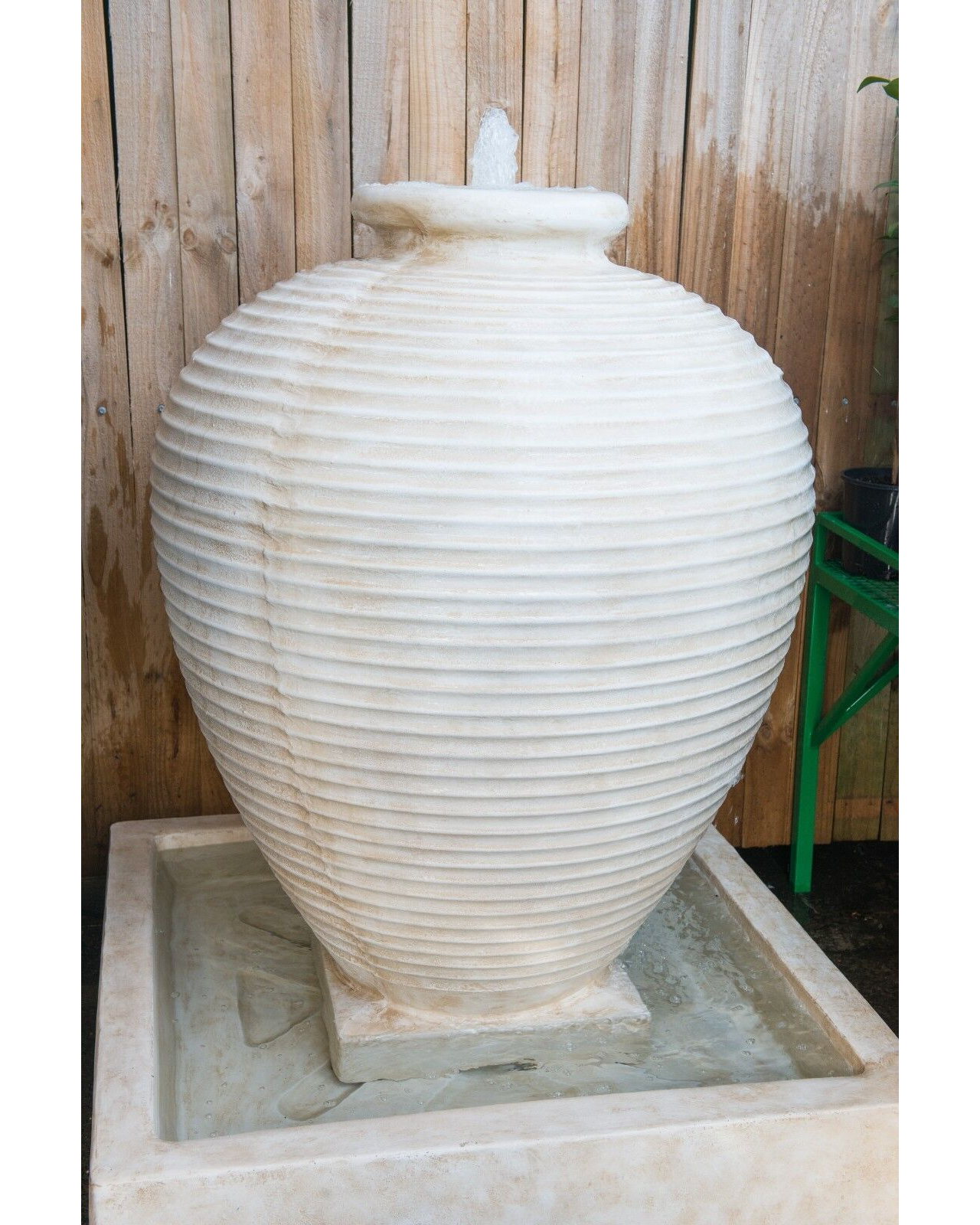

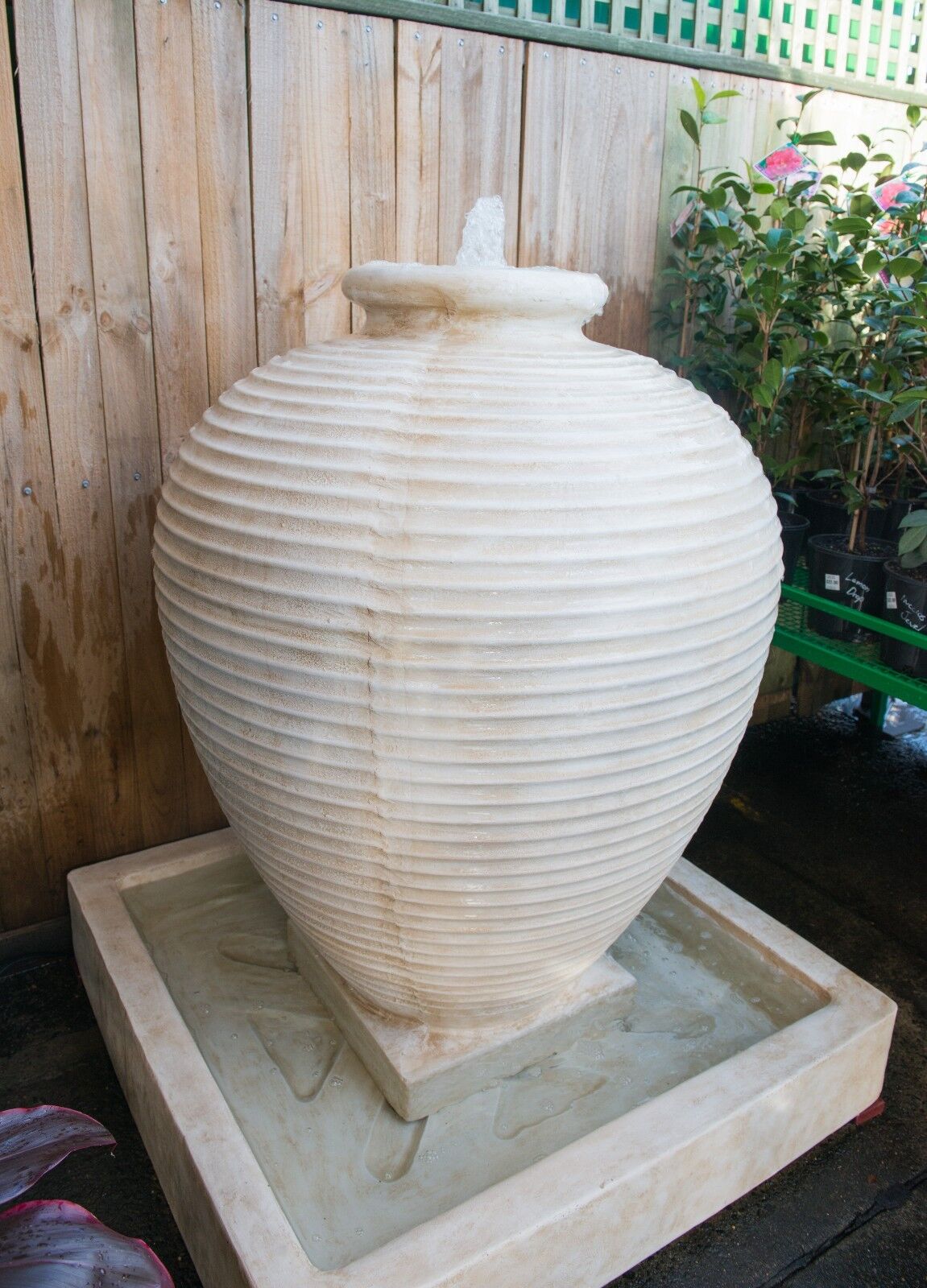
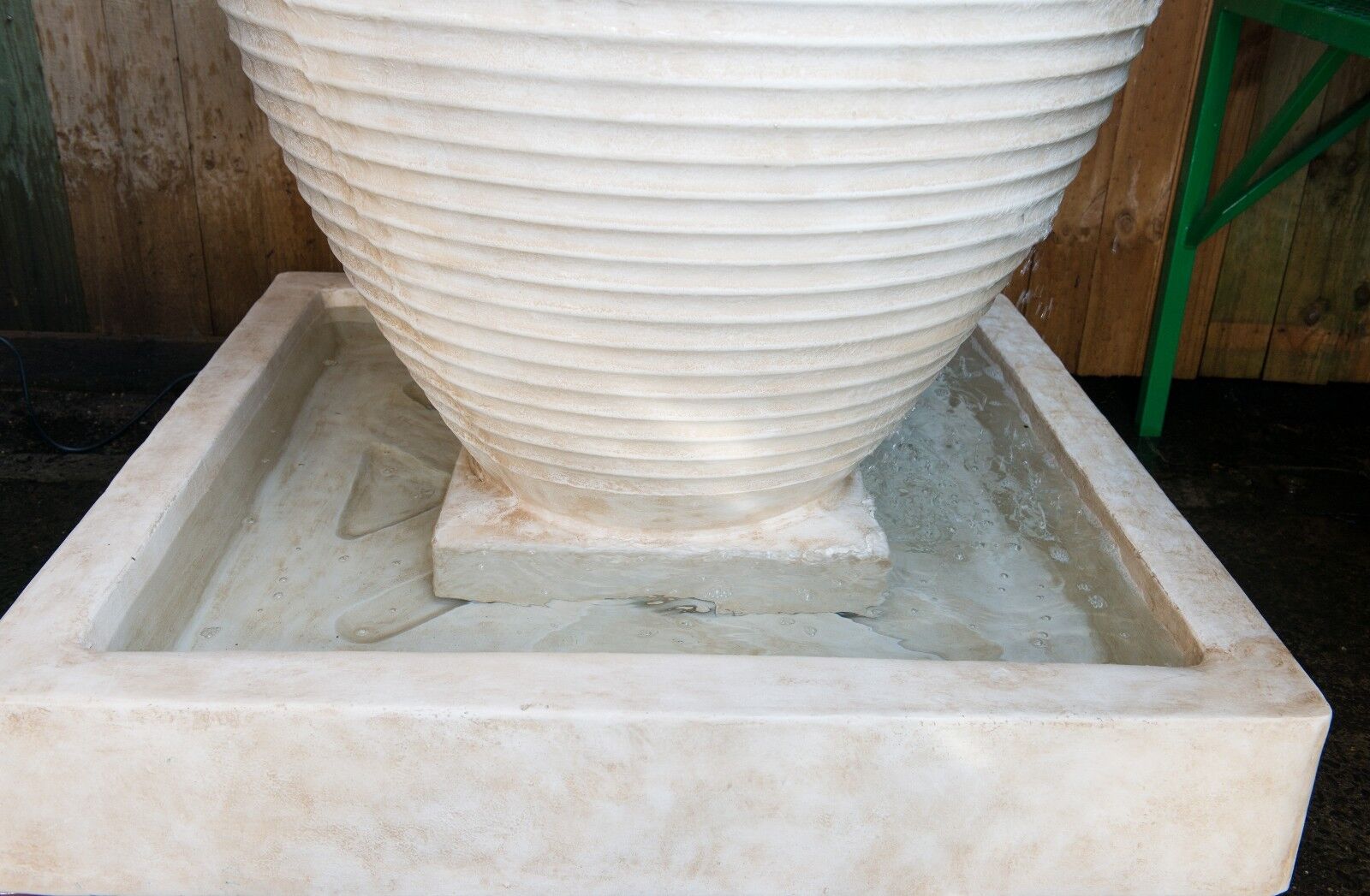
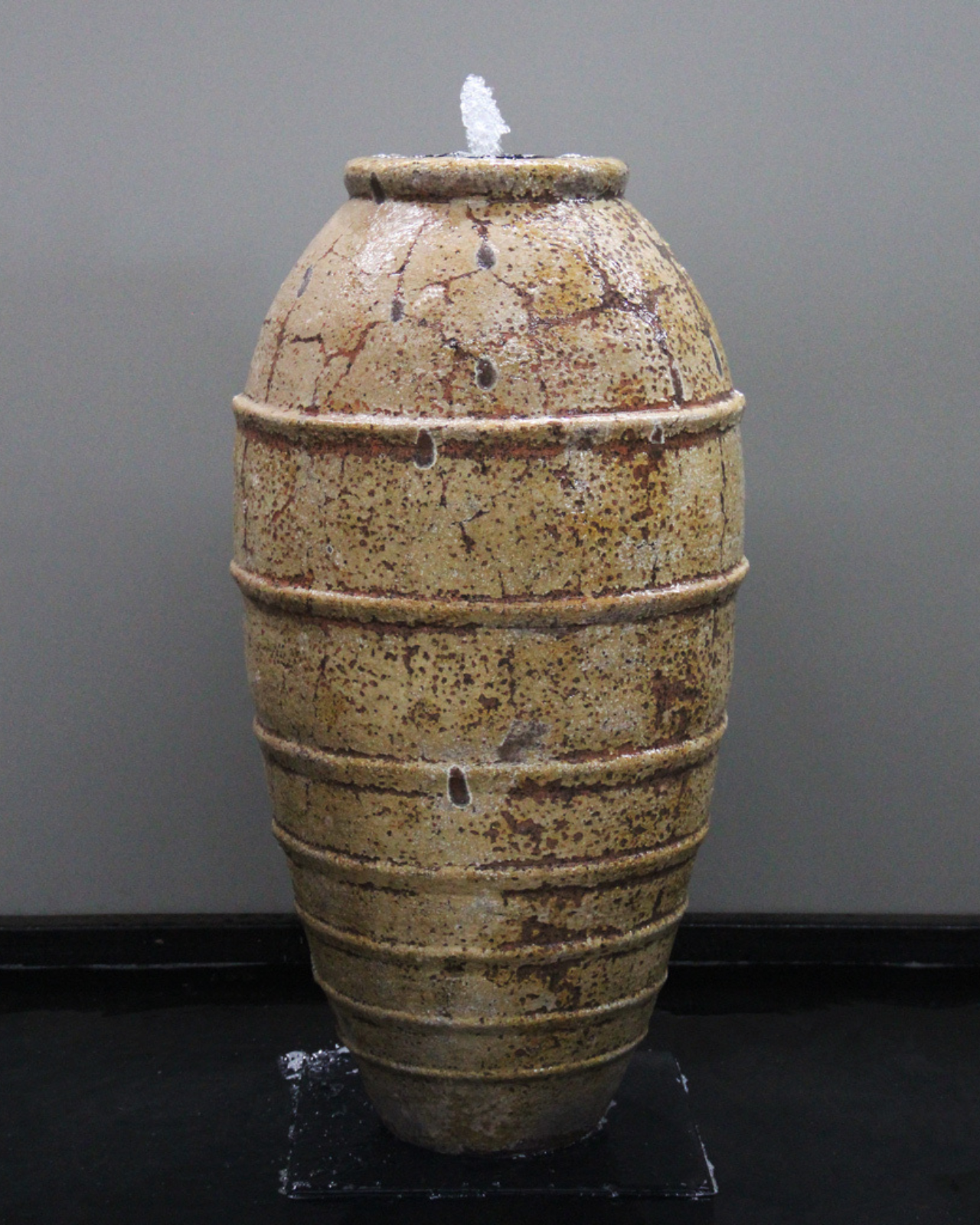

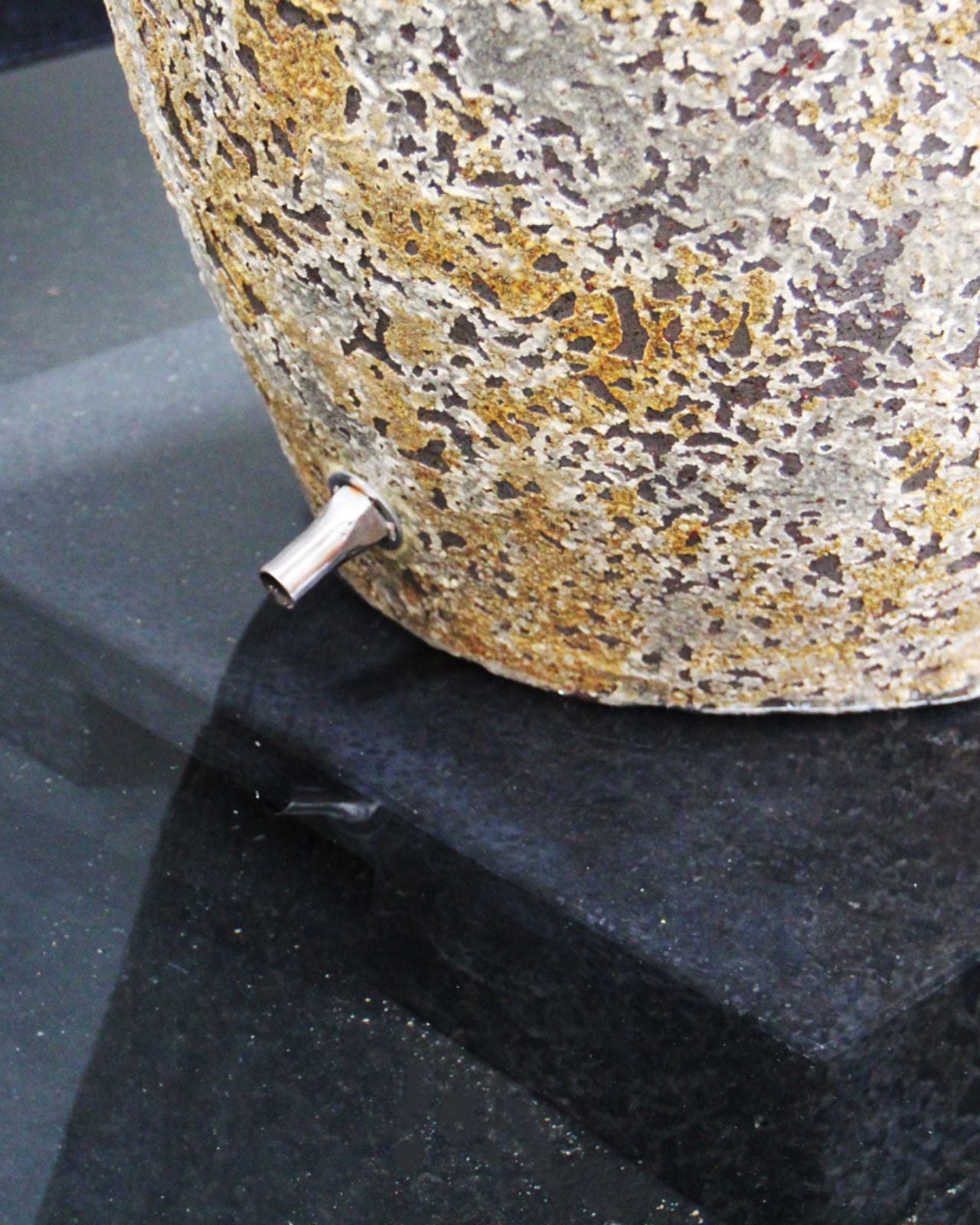
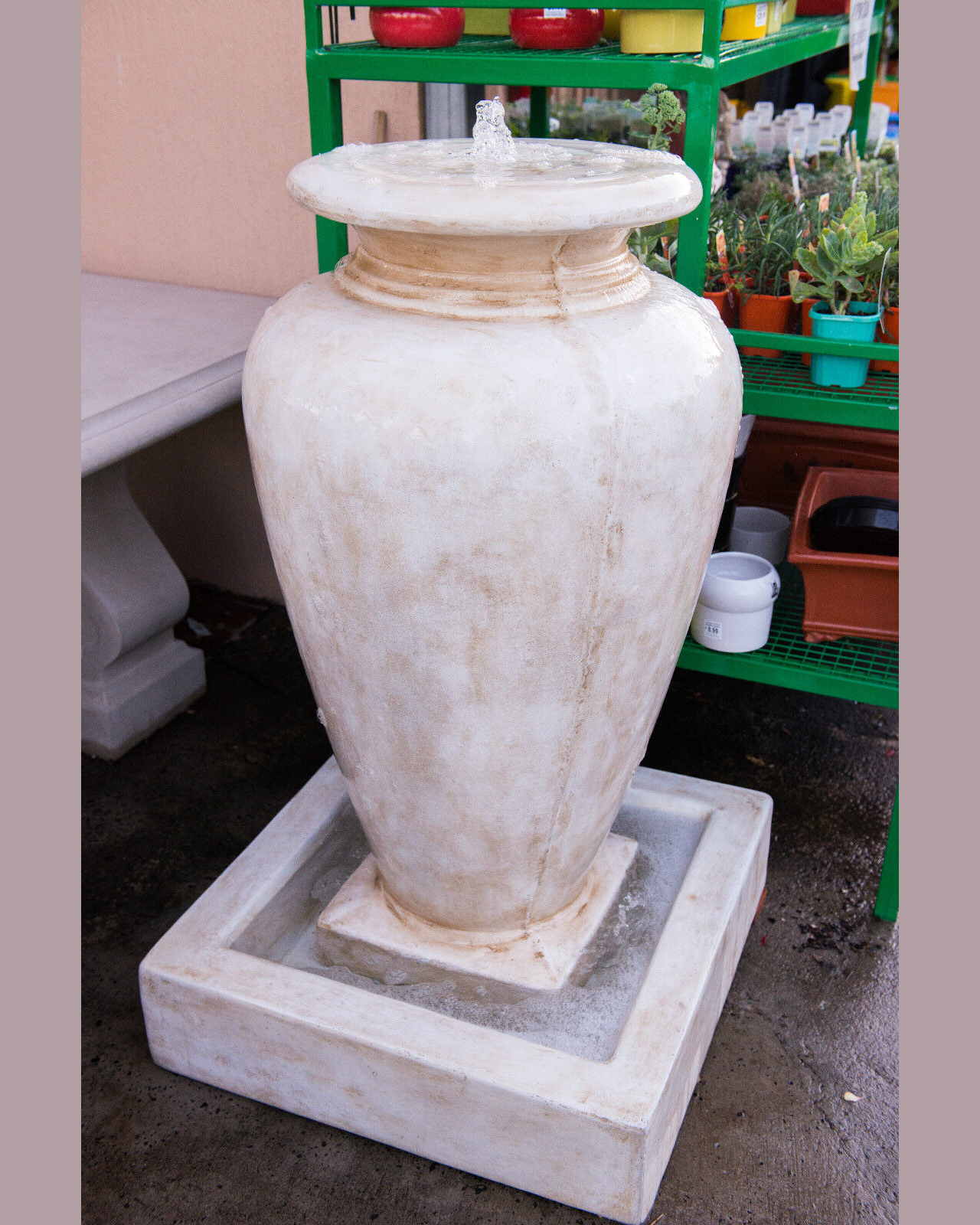

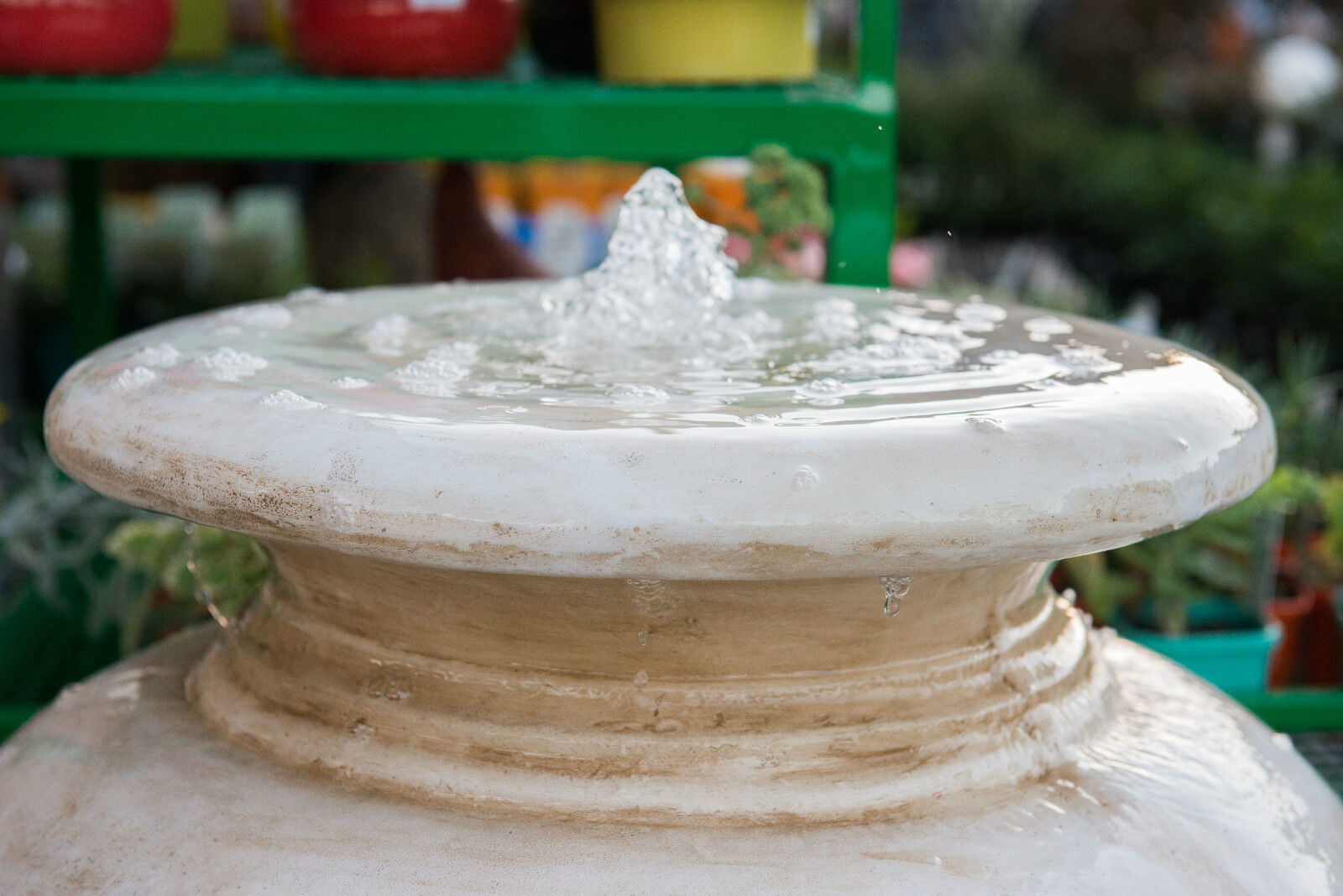
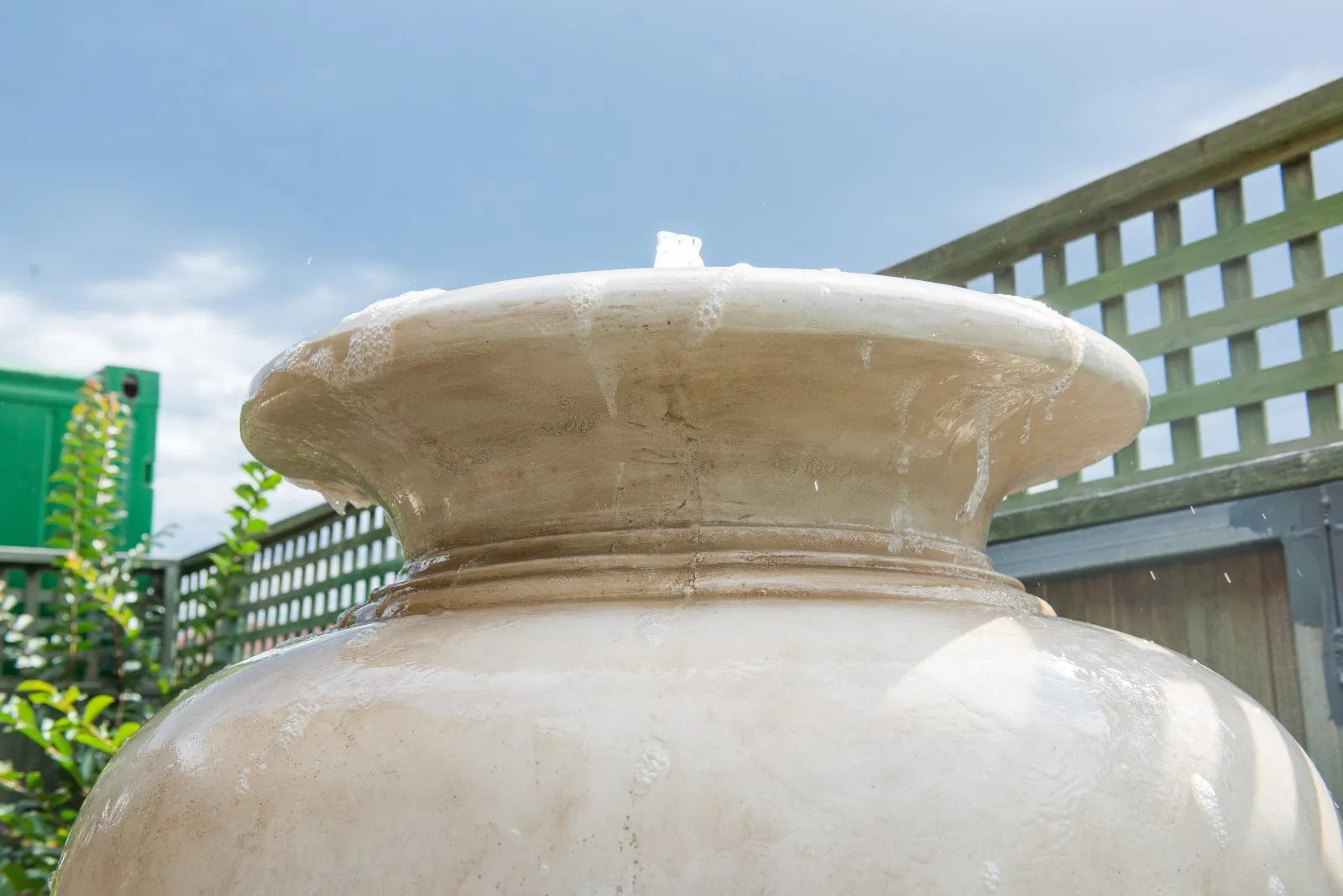
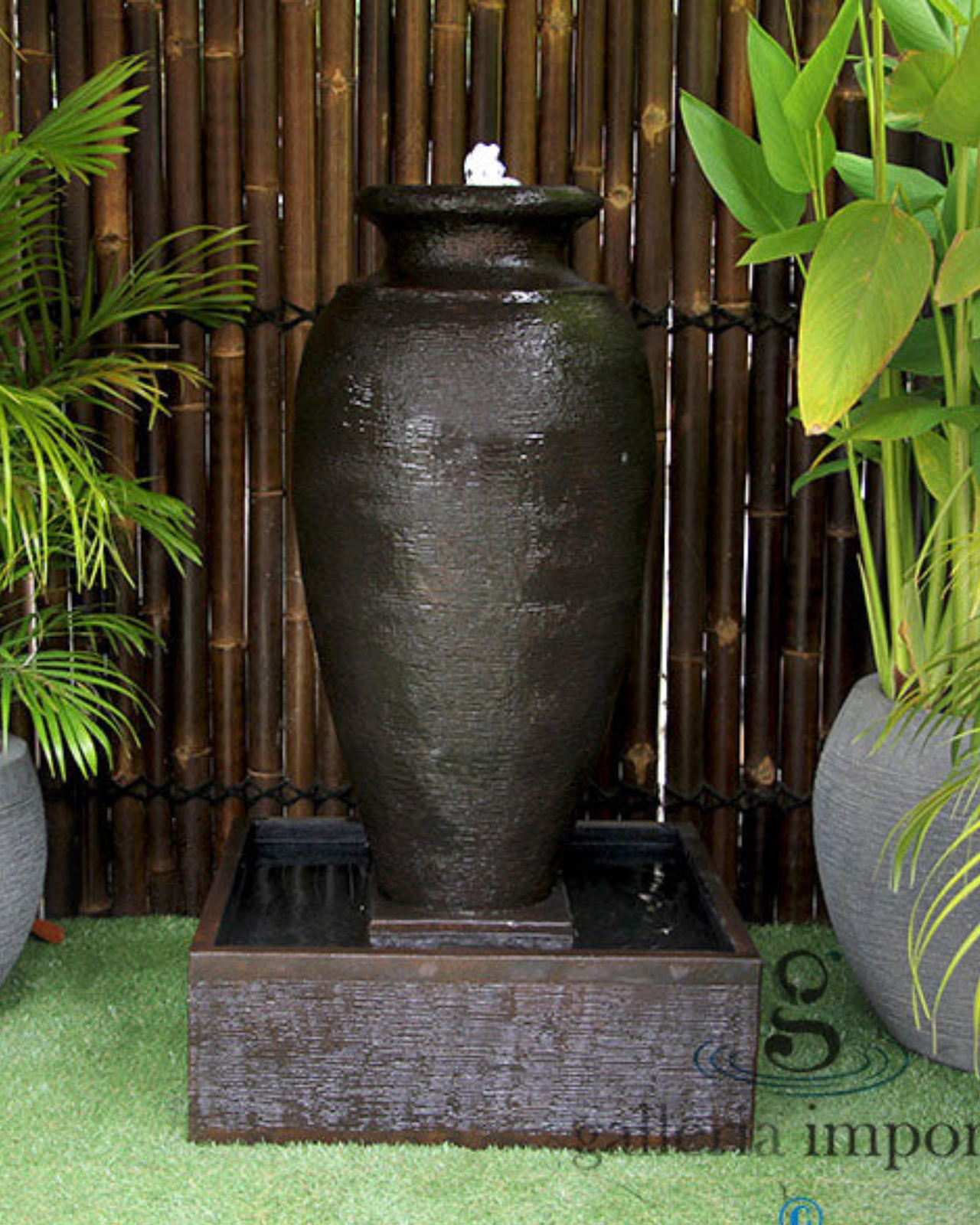

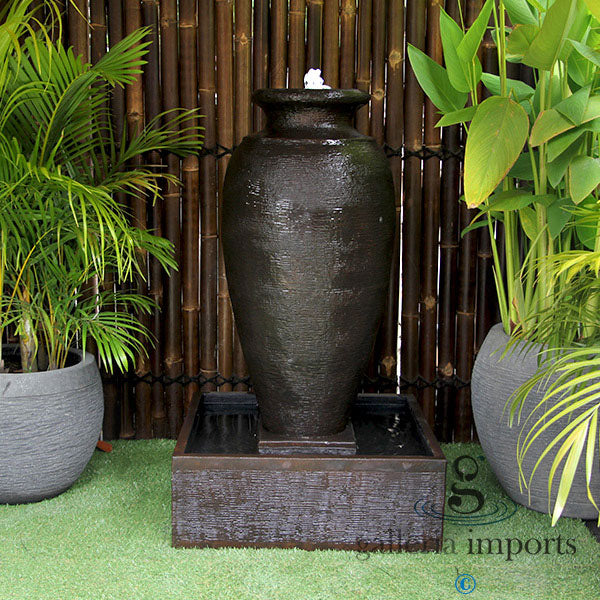
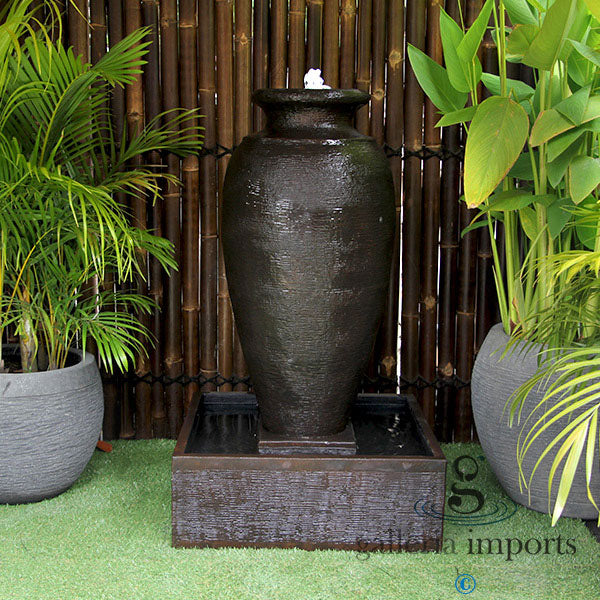
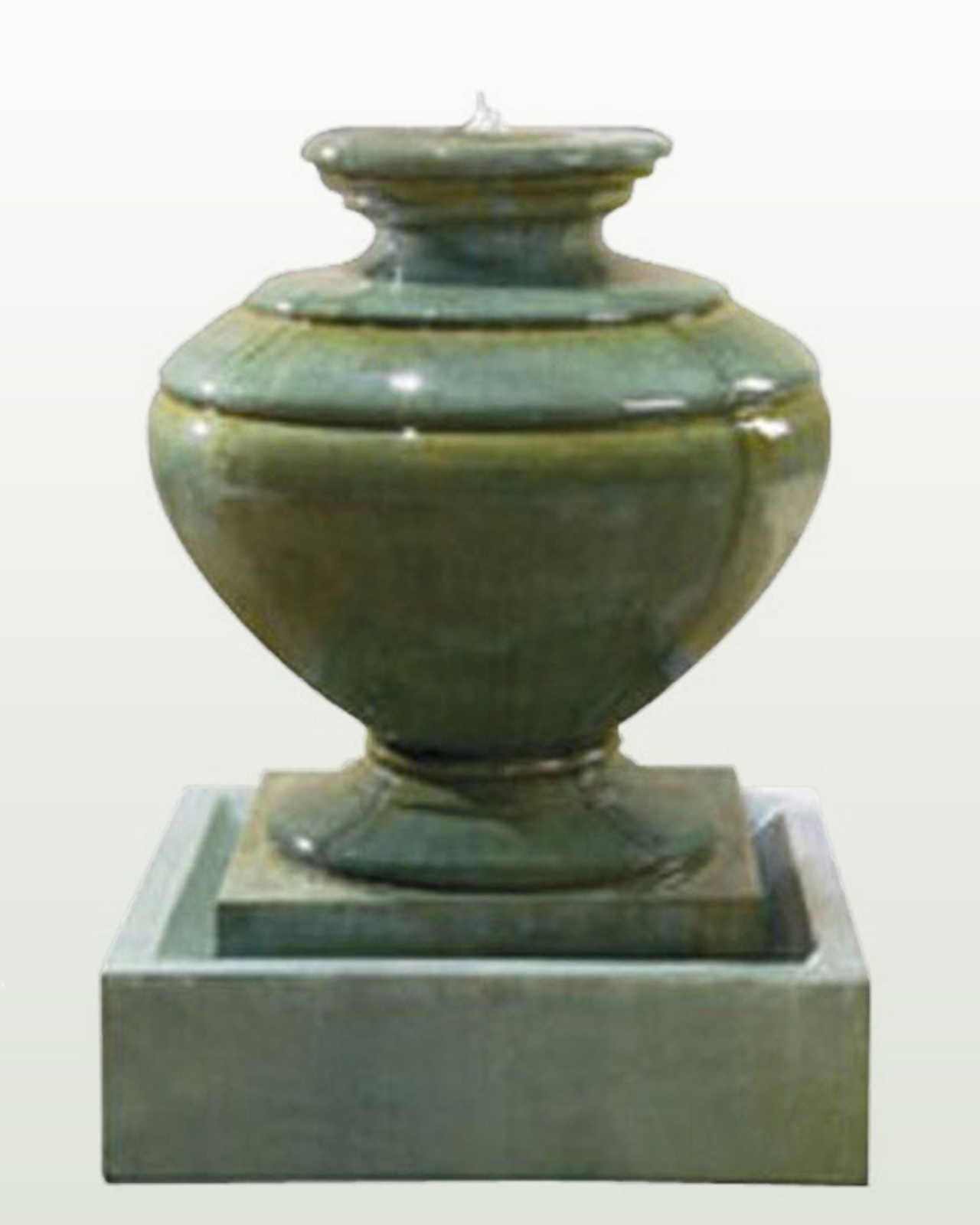
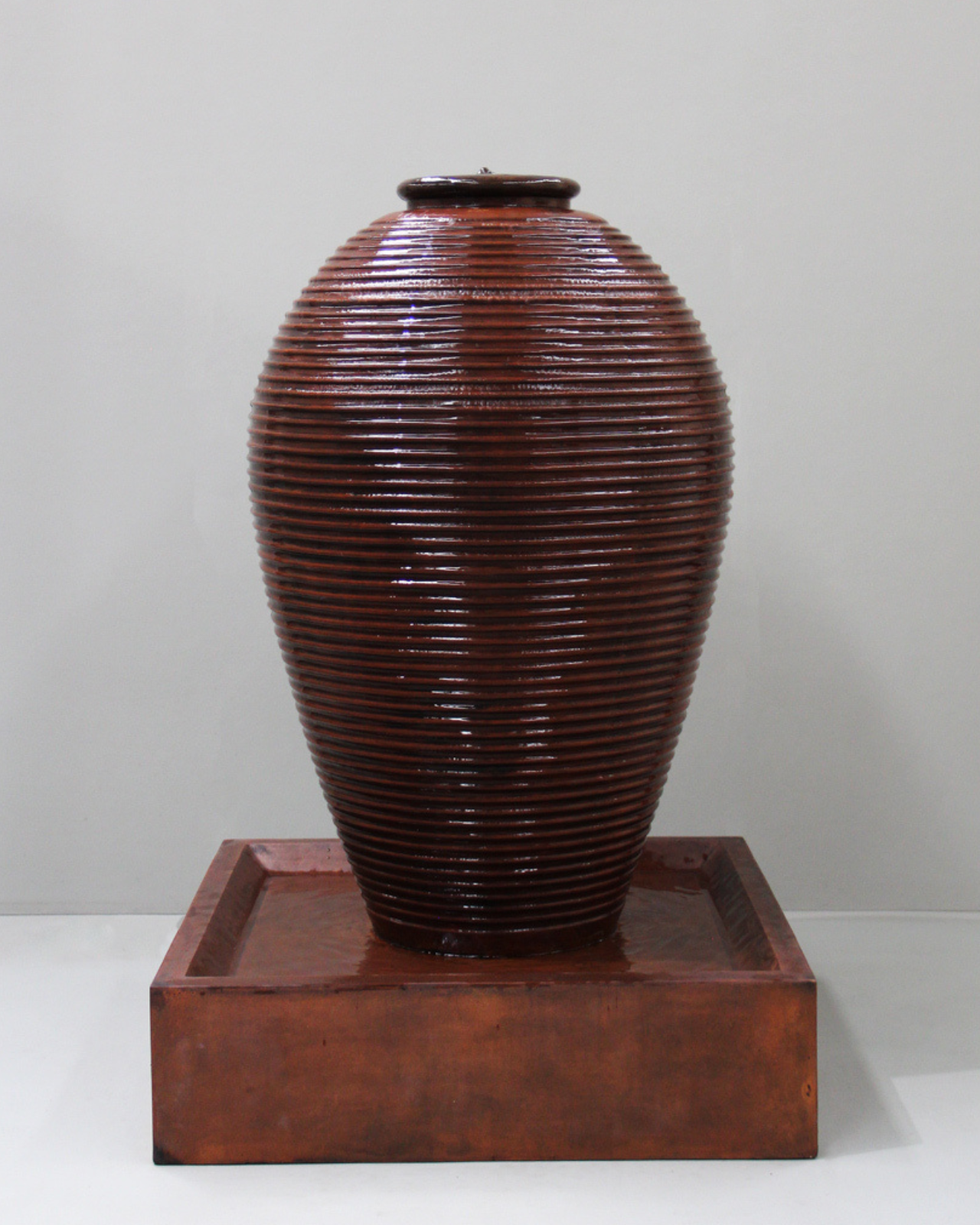
Share:
How to choose the right Water Feature
The Top 5 Benefits of Adding an Urn to Your Garden